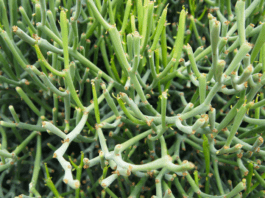Lily Flowers

Despite almost all of the lilies we grow originating from Asiatic countries or North America, these plants seem to be indelibly associated with English gardens.
Think of John Singer Sargent’s evocative Carnation, Lily, Lily, Rose, a painting set in a twilit Cotswold garden, glowing Chinese lanterns bobbing between the tall stems of milky white lily flowers, their scent almost discernible from the canvas.
Gertrude Jekyll’s 1903 book devoted to the genus, Lilies for English Gardens cemented their place in the gardening firmament and their expansion into the thousands
of species and cultivars available today only confirms their enduring popularity.
But with so many to choose from, how do you find the best for your garden? That’s
The Royal Horticultural Society’s Award of Garden Merit scheme comes in so handy, not just for lilies but all the plants the Society has trialed over the years.
“The plants that undergo AGM trials are assessed by a group of horticultural experts, and they have to meet the Award of Garden Merit criteria: excellence for garden use; a
good constitution; stability in the form and color; availability for purchase; and reasonable resistance to pests and diseases,” explains Sabatino Urzo, trials manager at RHS Garden
Wisley.
Not many lilies are holders of the award. Since they were long overdue for a trial, Sabatino and his team planted more than 200 separate cultivars and 20 species in Wisley’s trial field in 2018 and began the assessment.
But then, a setback: an outbreak of botrytis swept through the lilies during the summer of 2019, the second year of assessment, badly affecting many of the plants.
It was likely made worse by so many lilies grown so close together – quite unlike a normal garden situation.
“But we like to turn a negative into a positive,” insists Sabatino. “One of the AGM criteria is to spot resistance to pests and disease, and that allowed us to spot the best of the best, to zoom down to the 30 or so cultivars that didn’t show symptoms
of the disease.”
Although the results of the trial are yet to be announced, Sabatino is confident that plenty of Lily Flowers will win an AGM, and those that do will be the demanding customers that sailed through the botrytis attack and still flowered beautifully.
For that’s what most gardeners want in a lily: those beautiful, large, heavily scented mega-watt flowers. It would help if you grew the acid-soil-preferring Oriental lilies to deliver them, advises Sabatino.
“They’re renowned for being super fragrant, with a beautiful, large, wide-mouthed flower, generally in pink, white or carmine colors.”
For those gardeners who find the lily scent overpowering, stick to the Asiatic hybrids, he advises – their fragrance is not nearly as strong.
“The Asiatic hybrids are also among the earliest to bloom and the easiest to grow,” he notes, pointing out that they’ll grow happily in most soils, including alkaline ones.
“Asiatics tend to flower between 30 and 45 days after growth begins; Oriental hybrids can take up to three months,” he adds.
The bulbs can be planted in spring or autumn. Sabatino and his team planted the hybrids in March for the RHS trial, but the bulbs of species went in the autumn before.
All the lilies – Asiatic and Oriental – grew in the same soil in Wisley’s trial field. “The Oriental hybrids do perform better in slightly acid soil; the Asiatics perform well in alkaline
soil, but we didn’t make any adjustments to our soil’s pH,” he explains.
That way, the lilies awarded the AGM should perform well, whatever the soil in our gardens. If you’re worried about your soil pH, though, Sabatino recommends you look to another
group of lilies that will thrive regardless: martagons.
“If you get stuck, they grow in absolutely any soil,” he explains. “They’re strong, tough, adaptable, and they’ve got this lovely natural look because they come from mountain woodland environments.”
A lot of Sabatino’s stand-out varieties from the trial were Oriental lilies. One excellent variety that caught his eye was ‘Conca d’Or.’
“It’s absolutely gorgeous,” he says. “It’s a lemon-yellow bloom edged with white, and it was one of what I call the ‘super performers’ during the botrytis attack, with healthy leaves and
quality flowers.”
Pink and white Oriental lily ‘Anastasia’ looks just how lilies ought, sugary confection in flower, and is another on Sabatino’s super performer list, as is the Trumpet lily ‘Golden Splendor’ – its flowers living up to its name – and the Asiatic cultivar ‘Pearl White,’ its creamy white blooms featuring a slightly greenish tinge at the center.
Other Oriental lilies that did well include peach centered ‘Mister Cas,’ dark-speckled ‘Black Beauty,’ clotted cream-colored ‘Felino,’ rhubarb-and custard ‘Flavia,’ pendant ‘Gold Class’ and raspberry ‘Scheherazade.’ With so much choice, it’s just a matter of finding a flower that appeals or fits your color scheme.
“From my point of view, they were all gorgeous,” says Sabatino of the lilies he rates.
Of the species, L. leichtlinii and L. regale would look superb in any garden scheme. Some lilies with waterlily-like Lily Flowers caught the eye of many Wisley visitors while the trial was in bloom – cultivars such as ‘Roselily Sara.’
“They’re striking-looking flowers but not bee-friendly,” admits Sabatino. One other variety impressed him: ‘Fusion,’ a cross between the leopard lily, Lilium pardalinum, and L. longiflorum.
“It is superb, one of the newest in the trial, with large exotic blooms, strong stems, and deep red flowers with curved petals,” he enthuses.
One of the trickier aspects of lily growing is integrating them with the rest of the garden – it may be challenging to find the right spot for them in borders.
At home, Sabatino says he grows his lilies in containers. Do so, and you can put them in pride of place on terraces, to flank doors or mark flights of steps, or move the pots into gaps in borders and see where they look good.
“I move my containers into different parts of the garden and bury the pot rather than transplanting to give nice structural impact,” says Sabatino. A large, weighty container is best – At least 35-40cm deep – since lilies can be top-heavy.
“To achieve a good aesthetic result, I plant the bulbs very close to each other. This means the pots are dense and full of flowers making a fantastic show.”
How To Grow And Common Types of Lily Flowers
Cultivating lilies from bulbs is a popular hobby of a large number of gardeners.
The lily flower (Lilium spp.) is a trumpet-looking shaped plant and comes in various colors, including orange, pink, white and yellow.
The stalks of the Lily Flowers range from 2 to 6 feet (.60-2m.).
There are numerous types of lilies, but the general care of lily plants is the same. How to Grow Lilies Before placing bulbs in the ground, it’s essential to use a garden tool to loosen the soil.
Because lilies need good drainage, it helps to mix compost throughout the ground.
Drill a hole about 6 inches (15 cm.) deep and plant the bulb inside with the flat part down, and the pointed end is facing up.
Space the bulbs about 8 inches (20 cm.) apart. Stuff each hole with the soil and press it gently down. Water the ground thoroughly.
How to Care for Lily Flowers
Lilies adore the full sun, should you plant them in the shade, the stalks will elongate and lean against the sun.
Once the lilies are in active growth, be sure to water them frequently. Additional care of lily plants involves removing the dead flowers.
Be sure not to cut off more than a third of the stem. This can reduce the plant’s heartiness and longevity.
If you are growing lilies for indoor arrangements only, it might be best to plant them in a chosen cutting garden, where you can plant fresh bulbs each year.
When the lilies’ bulbs go dormant in the fall, this is the best time to divide the bulbs and replant them.
Common Types of Lily Flowers
Some of the most popular types of lilies include:
Asiatic lilies – The Asiatic lily is the soonest to bloom. They are as well easy to grow. This lily will cultivate almost anyplace. Most are scentless, but they have the widest variety of colors.
Martagon lilies – Martagon lilies have coiled leaves and Turks cap flowers. It is also called Turk’s cap lily, with as many as 20 blooms on one stem. It comes in many colors and is often freckled with dots of color. Martagons do not grow well in hot climates.
Trumpet lilies – Trumpet lilies are known for their trumpet-like flowers and are very fragrant.
Tiger lilies – Tiger lilies are very hardy. The flowers are recurved and freckled. They multiply in clumps and produce more than a dozen flowers on each stem. Their colors stretch from a golden yellow into a deep red.
Rubrum lilies: The rubrum lily resembles the tiger lily, although the colors go from white to far pink and have a sweet scent.
Oriental lilies – Oriental lilies bloom in mid-to late summer, the last lilies to bloom. The lilies may grow to 8 feet (2.5 m.) tall.
They have a spicy fragrance and come in colors of pink, white, red, and bi-color





Comments are closed.